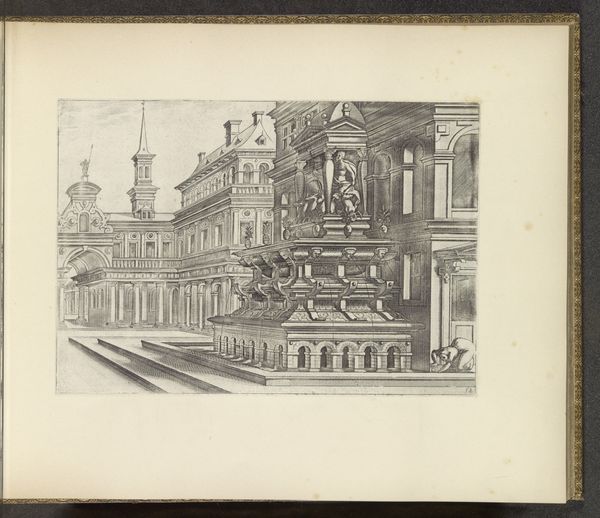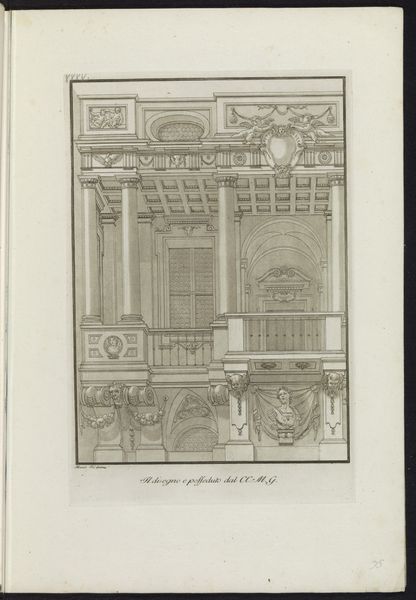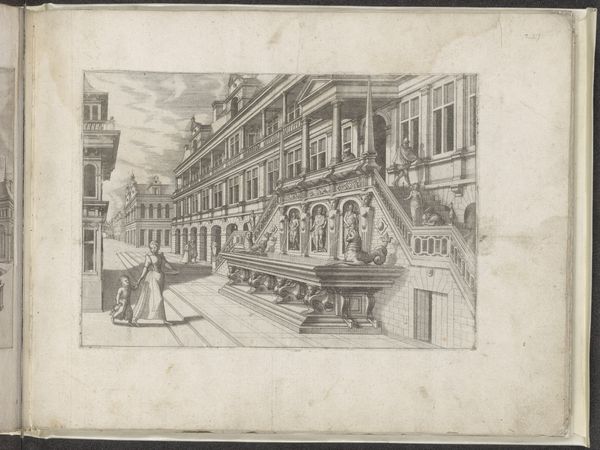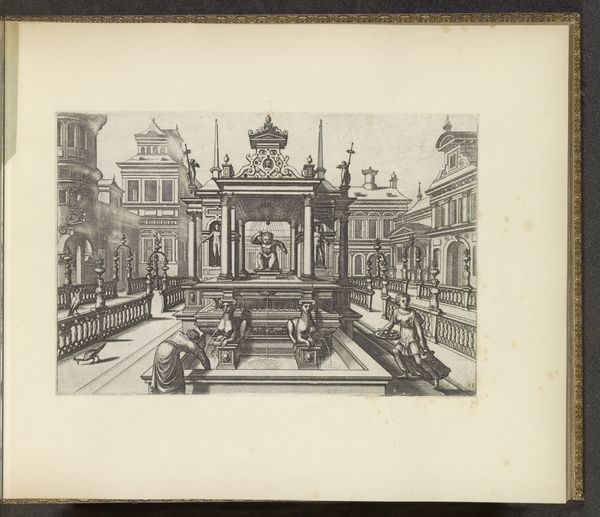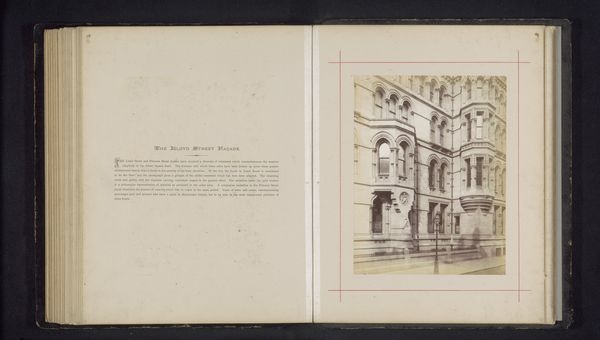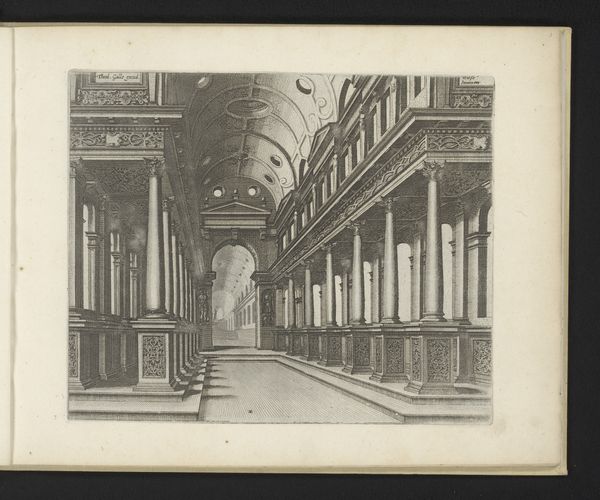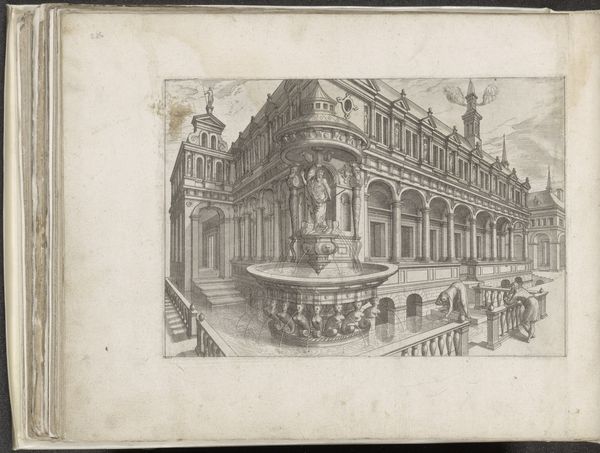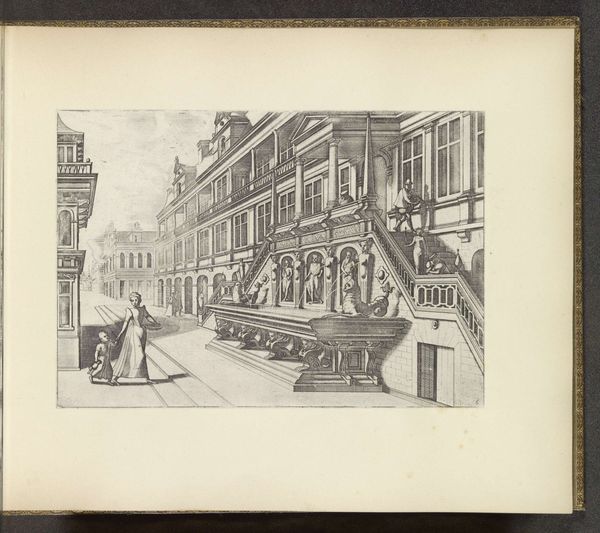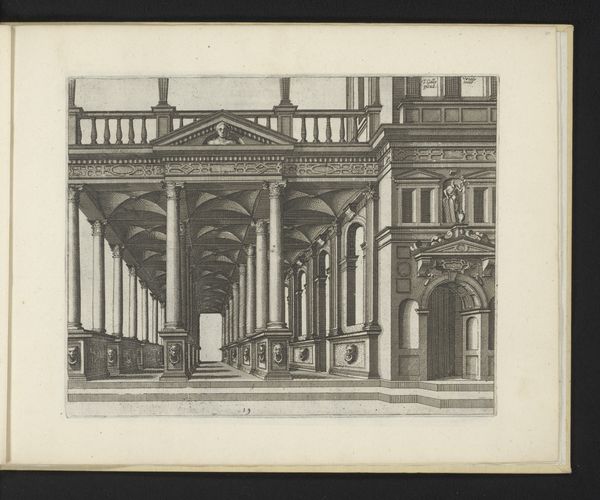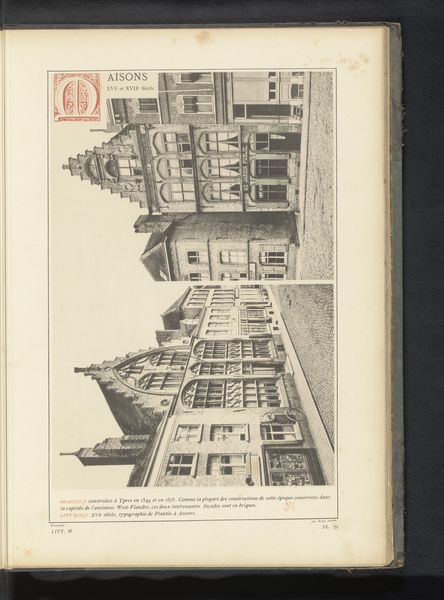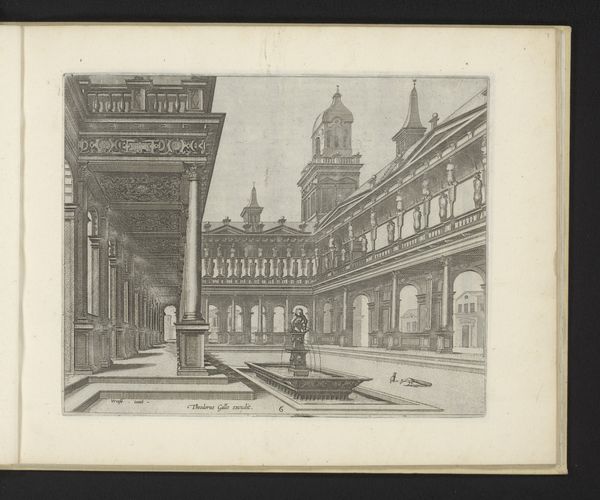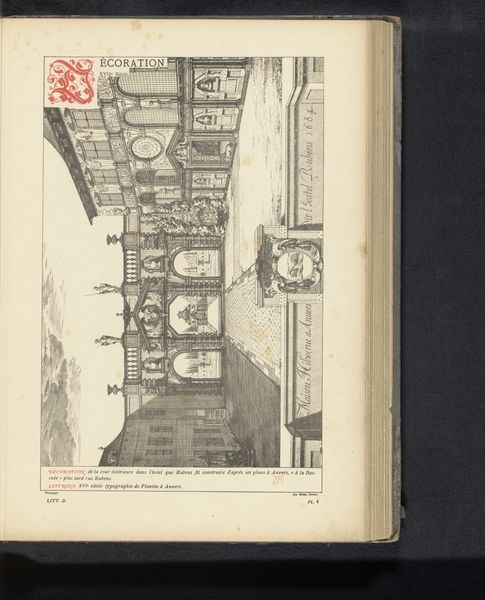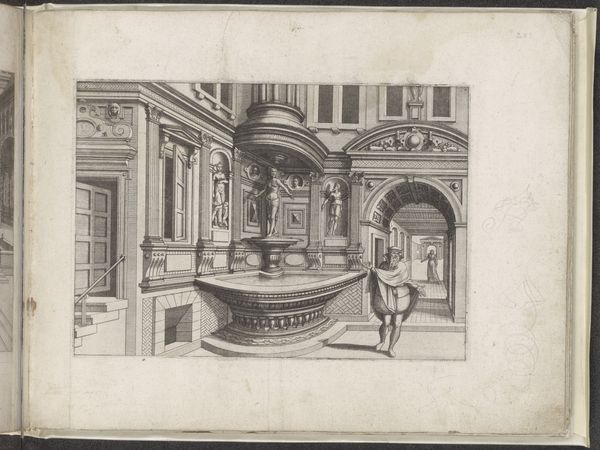
engraving, architecture
#
baroque
#
line
#
cityscape
#
history-painting
#
engraving
#
architecture
Dimensions: height 268 mm, width 180 mm
Copyright: Rijks Museum: Open Domain
Editor: This engraving, "Trappenhuis in slot Drottningholm" created in 1694 by Willem Swidde and currently housed in the Rijksmuseum, presents a fascinating perspective of the staircase in Drottningholm Palace. I'm struck by how this detailed rendering seems to suggest a commentary on class and social hierarchy. What stands out to you? Curator: It's fascinating how you immediately pick up on social dynamics. I agree. Baroque art, architecture, and court life went hand in hand in promoting a system that legitimized royal authority. The theatricality and the pronounced ornamentation emphasize this idea of seeing and being seen, particularly within a space designed to impress. What message do you think the inclusion of human figures might send within this setting? Editor: I would say their inclusion emphasizes that Drottningholm isn’t merely an architectural showpiece, but a lived-in space where class distinctions play out daily. They accentuate how architecture frames the everyday actions of individuals depending on their position within the palace’s complex web. Curator: Exactly. And that’s crucial, considering Sweden’s own evolving relationship with monarchy and power at this time. This depiction may well be idealized but considering it acknowledges that space and those given access to it signal prestige in many overt and subtle ways. How does this resonate with contemporary society? Editor: In today’s world, maybe museums themselves serve as modern palaces, inviting us to contemplate power, access, and the stories being told about who gets remembered. Thinking about whose stories we tell and how we tell them feels paramount. Curator: Precisely. Reflecting on power and privilege through art—historic and contemporary—compels us to confront crucial, urgent matters of access and representation, now and throughout time. Editor: I'll never look at a historical cityscape the same way again!
Comments
No comments
Be the first to comment and join the conversation on the ultimate creative platform.

